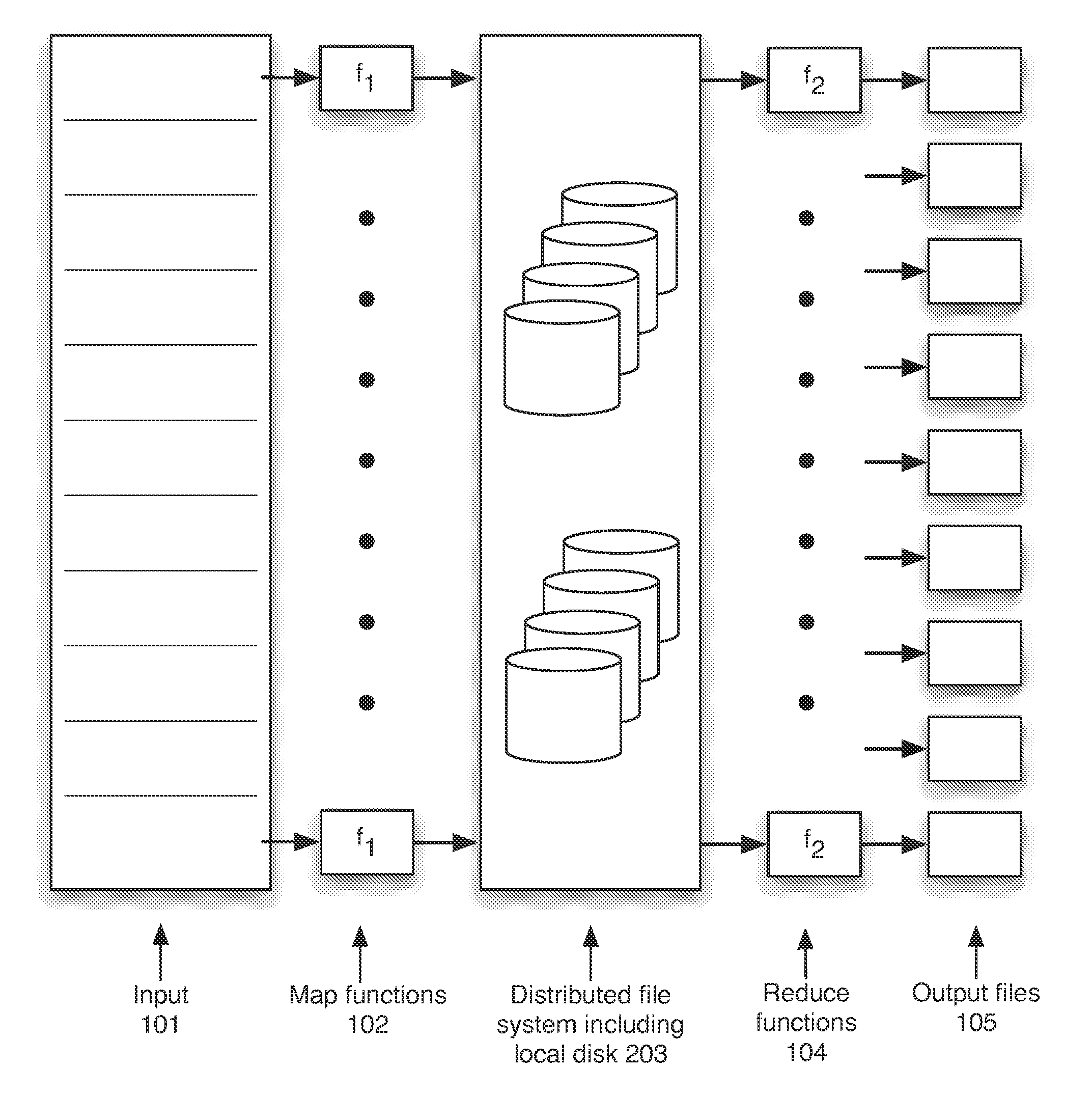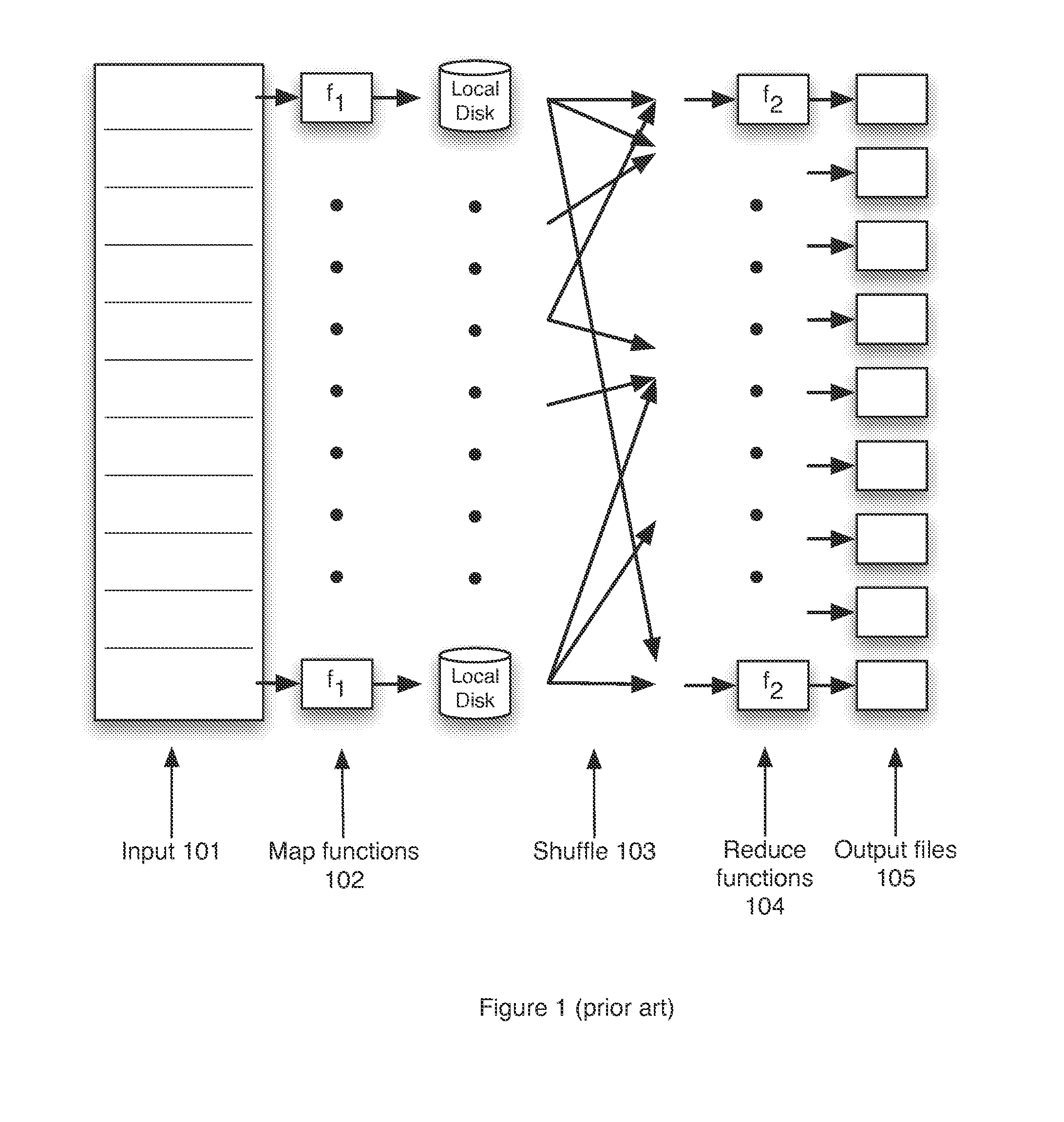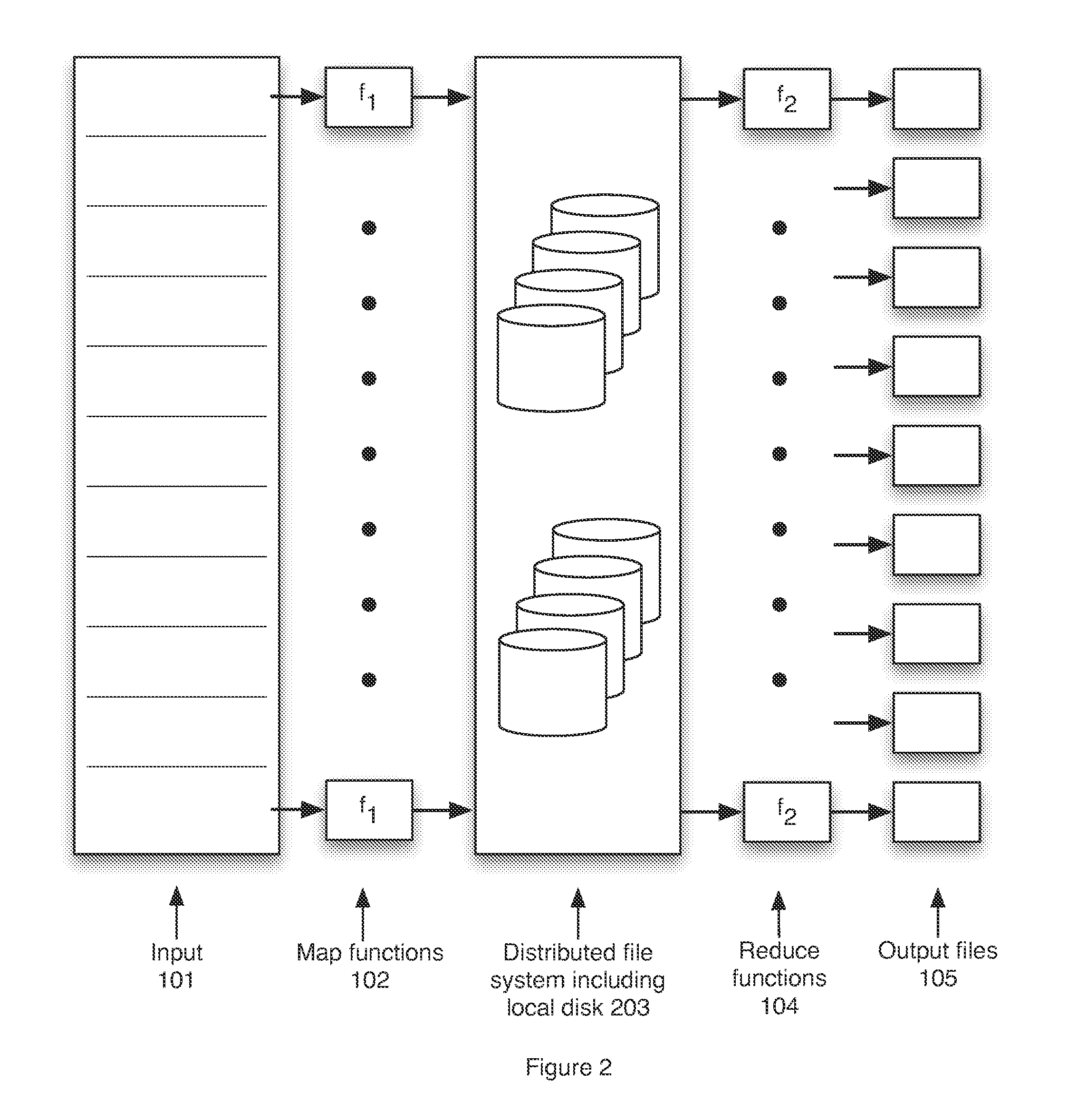Map-Reduce Ready Distributed File System
a file system and map-reduce technology, applied in the field of computer file systems, can solve the problems of imposing severe load on the file system, limiting the creation rate of hdfs to at most a thousand files per second, and almost trivial shuffle operation
- Summary
- Abstract
- Description
- Claims
- Application Information
AI Technical Summary
Problems solved by technology
Method used
Image
Examples
Embodiment Construction
[0044]The herein disclosed distributed file system provides transactional read-write-update semantics with file chunk replication and huge file-create rates provides major technical advantages for map-reduce computing clusters. The subject file system has a number of technical innovations that make this possible for the first time and thus provides an example of how a map-reduce compatible file system can be built.
[0045]FIG. 2 is a block schematic diagram that shows an outline of the map-reduce process in which shuffle 203 is contained in a distributed file system, and in which inputs and outputs may or may not be in the distributed file system according to the invention. This file system consists of successive component layers that each provide the basis on which the next layer is built. These are discussed in greater detail below and include:[0046]A primitive storage layer referred to as storage pools. Storage pools knit together raw block stores and provide a storage mechanism fo...
PUM
 Login to View More
Login to View More Abstract
Description
Claims
Application Information
 Login to View More
Login to View More - R&D
- Intellectual Property
- Life Sciences
- Materials
- Tech Scout
- Unparalleled Data Quality
- Higher Quality Content
- 60% Fewer Hallucinations
Browse by: Latest US Patents, China's latest patents, Technical Efficacy Thesaurus, Application Domain, Technology Topic, Popular Technical Reports.
© 2025 PatSnap. All rights reserved.Legal|Privacy policy|Modern Slavery Act Transparency Statement|Sitemap|About US| Contact US: help@patsnap.com



